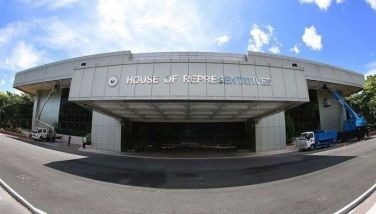People cause earthquakes

January 15, 2007 | 12:00am
We Filipinos call braggarts bagyo (typhoon) and believe that faith can move mountains. But do we know that people can cause earthquakes?
Humans – tinkering with nature – triggered some of the most damaging tremors in recent past. To be exact, mining for fuel caused the worst quakes in the history of Australia and Central Asia, research shows. And we Filipinos had better learn lessons from these disasters as we seek to dig up more coal, natural gas and possibly crude oil.
Australia’s most powerful temblor hit magnitude 5.6 at epicenter Newcastle in New South Wales on Dec. 29, 1989, killing 13 and injuring 160 people on top of destroying $3.5 billion in property. The earth simply shook from two centuries of coal mining, according to a study by Christian D. Klose of Columbia University, New York. (The study was presented to the American Geophysical Union last month and is featured in the National Geographic Online this month.)
To people living down under, Newcastle is synonymous to coal. Klose said the removal of two million tons of coal altered the balance of tectonic forces, causing colossal crashes underground and shaking the earth’s surface. But just as damaging was the removal of groundwater to keep the mines from flooding but putting more stress on the earth. "For each ton of coal produced, 4.3 times more water was extracted," Klose noted.
Small consolation, that extraction ratio is the low end. Other mining operations are worse, siphoning out 150 tons of water for every ton of coal produced, Klose said. Philippine mining regulators would do well to take note of the figures.
The Newcastle temblor wasn’t enormous, but only because Australia isn’t seismically active. Klose has monitored about 200 human-caused quakes, all in the past 60 years and mostly due to mining. Three of the biggest man-made quakes of all time were the trio that hit Uzbekistan’s Gazli natural gas region between 1976 and 1984 - with magnitudes greater than 6.8, with the largest at 7.3.
What makes the Newcastle quake unique is that the monetary damage far exceeded the total value of the coal mined. In effect, the income from 200 years of mining paled in one fell swoop. Talk about economic blessings supposedly far outweighing the environmental sacrifice.
Klose blamed coal and other types of mining for the majority of human-triggered tremors, mostly after the Second World War. One such tragedy happened in the US Midwest. The locals were fishing in the lake one fine weekend when the water simply drained out into a hole in the lakebed and into the labyrinth of mining tunnels underneath. It was like a drain plug being pulled out of a sink.
A third of the quakes were caused by construction of huge dams, many of which were built in the 1950s. Such reservoirs are also blamed for the destruction of forests and lakes up to 50 miles away.
Human-triggered earthquakes are particularly dangerous and more powerful in seismically active areas like Central Asia where Uzbekistan is, Klose warned. People simply aren’t prepared, Klose noted, plus those in areas with less quakes are more trigger-sensitive about stress building up over a long period.
That again is one item for close study by Filipino geophysicists. Not only is the archipelago in an earthquake belt but also in the Pacific Rim of Fire, that side of the ocean that happens to have numerous active undersea volcanoes. That landslides occur almost every week, destroying homes and farms is a sign of stress, according to the Mines and Geosciences Bureau. But we Filipinos ignore the hazards of tinkering with the earth, and insist on building homes even on slopes, and in over-logging even at town edges.
An "avid reader" of this column, as she calls herself, asks some questions while requesting anonymity for reasons stated below:
"The National Power Corporation and National Transmission Company gave bonuses to all its employees last Christmas - in the form of gift checks (of a prominent department store). Since some employees wished to use their bonus to pay rentals, school tuition, or medical and dental needs, they asked if they could get cash instead. Management denied the request, saying that those who did not want the gift checks could return them, but still not draw cash. Enterprising individuals changed the gift checks for cash at 12-percent margin.
"The explanation given by an NPC top executive during one flag-raising ceremony was that gift checks are better because tax-exempt, while taxes can be deducted from cash bonuses.
"Imagine a government official depriving the government he serves of the taxes to be paid by its employees! Is this not a technical circumvention of the Revenue Code? Is it not a crime?"
"I bring this up because it may have happened in other government agencies as well, and may happen again next Christmas."
From inquiries, I found out that many government agencies gave out the bonuses tax-exempt simply by labeling them "cash gift". Still, the BIR must give an official ruling, and not leave agency heads doing their own thing.
E-mail: [email protected]
Humans – tinkering with nature – triggered some of the most damaging tremors in recent past. To be exact, mining for fuel caused the worst quakes in the history of Australia and Central Asia, research shows. And we Filipinos had better learn lessons from these disasters as we seek to dig up more coal, natural gas and possibly crude oil.

Australia’s most powerful temblor hit magnitude 5.6 at epicenter Newcastle in New South Wales on Dec. 29, 1989, killing 13 and injuring 160 people on top of destroying $3.5 billion in property. The earth simply shook from two centuries of coal mining, according to a study by Christian D. Klose of Columbia University, New York. (The study was presented to the American Geophysical Union last month and is featured in the National Geographic Online this month.)
To people living down under, Newcastle is synonymous to coal. Klose said the removal of two million tons of coal altered the balance of tectonic forces, causing colossal crashes underground and shaking the earth’s surface. But just as damaging was the removal of groundwater to keep the mines from flooding but putting more stress on the earth. "For each ton of coal produced, 4.3 times more water was extracted," Klose noted.
Small consolation, that extraction ratio is the low end. Other mining operations are worse, siphoning out 150 tons of water for every ton of coal produced, Klose said. Philippine mining regulators would do well to take note of the figures.
The Newcastle temblor wasn’t enormous, but only because Australia isn’t seismically active. Klose has monitored about 200 human-caused quakes, all in the past 60 years and mostly due to mining. Three of the biggest man-made quakes of all time were the trio that hit Uzbekistan’s Gazli natural gas region between 1976 and 1984 - with magnitudes greater than 6.8, with the largest at 7.3.
What makes the Newcastle quake unique is that the monetary damage far exceeded the total value of the coal mined. In effect, the income from 200 years of mining paled in one fell swoop. Talk about economic blessings supposedly far outweighing the environmental sacrifice.
Klose blamed coal and other types of mining for the majority of human-triggered tremors, mostly after the Second World War. One such tragedy happened in the US Midwest. The locals were fishing in the lake one fine weekend when the water simply drained out into a hole in the lakebed and into the labyrinth of mining tunnels underneath. It was like a drain plug being pulled out of a sink.
A third of the quakes were caused by construction of huge dams, many of which were built in the 1950s. Such reservoirs are also blamed for the destruction of forests and lakes up to 50 miles away.
Human-triggered earthquakes are particularly dangerous and more powerful in seismically active areas like Central Asia where Uzbekistan is, Klose warned. People simply aren’t prepared, Klose noted, plus those in areas with less quakes are more trigger-sensitive about stress building up over a long period.
That again is one item for close study by Filipino geophysicists. Not only is the archipelago in an earthquake belt but also in the Pacific Rim of Fire, that side of the ocean that happens to have numerous active undersea volcanoes. That landslides occur almost every week, destroying homes and farms is a sign of stress, according to the Mines and Geosciences Bureau. But we Filipinos ignore the hazards of tinkering with the earth, and insist on building homes even on slopes, and in over-logging even at town edges.
"The National Power Corporation and National Transmission Company gave bonuses to all its employees last Christmas - in the form of gift checks (of a prominent department store). Since some employees wished to use their bonus to pay rentals, school tuition, or medical and dental needs, they asked if they could get cash instead. Management denied the request, saying that those who did not want the gift checks could return them, but still not draw cash. Enterprising individuals changed the gift checks for cash at 12-percent margin.
"The explanation given by an NPC top executive during one flag-raising ceremony was that gift checks are better because tax-exempt, while taxes can be deducted from cash bonuses.
"Imagine a government official depriving the government he serves of the taxes to be paid by its employees! Is this not a technical circumvention of the Revenue Code? Is it not a crime?"
"I bring this up because it may have happened in other government agencies as well, and may happen again next Christmas."
From inquiries, I found out that many government agencies gave out the bonuses tax-exempt simply by labeling them "cash gift". Still, the BIR must give an official ruling, and not leave agency heads doing their own thing.
BrandSpace Articles
<
>
- Latest
- Trending
Trending
Latest
Recommended



























